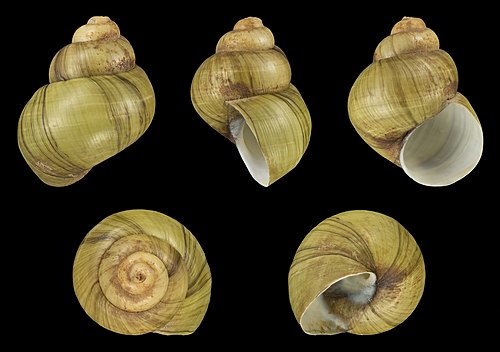User:Astronomyinertia
This user...
|
Today's featured article |
|---|
|
Mary Anning (21 May 1799 – 9 March 1847) was an English fossil collector and palaeontologist. She made discoveries of Jurassic marine fossil beds in the cliffs along the English Channel at Lyme Regis, which changed the scientific thinking about prehistoric life and the history of the Earth. Her discoveries included the first correctly identified ichthyosaur skeleton, the first two nearly complete plesiosaur skeletons, and the first pterosaur skeleton outside Germany. Her observations helped prove that coprolites were fossilised faeces and that belemnite fossils contained ink sacs. As a woman, Anning could not join the Geological Society of London and struggled to receive credit for her contributions. Henry De la Beche painted Duria Antiquior based on fossils Anning had found and sold its prints for her benefit. After her death, an article about her life was published in Charles Dickens's literary magazine All the Year Round. A statue of Anning was erected in 2022, and she has been depicted in film and in manga. (Full article...)
Recently featured:
|
Contributions[edit]
Other things[edit]
DYKs
| On 24 February 2012, Did you know? was updated with a fact from the article Sri Lanka Eye Donation Society, which you created or substantially expanded. The fact was ... that the Sri Lanka Eye Donation Society has donated over 60,000 corneas for transplantation in 57 countries, including those of the late President of Sri Lanka, J. R. Jayewardene? The nomination discussion and review may be seen at Template:Did you know nominations/Sri Lanka Eye Donation Society. |
| On 31 March 2012, Did you know? was updated with a fact from the article Arthur C. Clarke Institute for Modern Technologies, which you created or substantially expanded. The fact was ... that Arthur C. Clarke Institute for Modern Technologies is the home to the largest optical telescope in Sri Lanka? The nomination discussion and review may be seen at Template:Did you know nominations/Arthur C. Clarke Institute for Modern Technologies. |
| On 21 April 2012, Did you know? was updated with a fact from the article 1989 Temple of the Tooth attack, which you created or substantially expanded. The fact was ... that Temple of the Tooth, a UNESCO World Heritage Site in Sri Lanka that houses the relic of the tooth of the Buddha, was attacked twice; first in 1989 and then in 1998? |
| On 21 April 2012, Did you know? was updated with a fact from the article 1998 Temple of the Tooth attack, which you created or substantially expanded. The fact was ... that Temple of the Tooth, a UNESCO World Heritage Site in Sri Lanka that houses the relic of the tooth of the Buddha, was attacked twice; first in 1989 and then in 1998? |
| On 18 May 2012, Did you know? was updated with a fact from the article Sunday Observer (Sri Lanka), which you created or substantially expanded. The fact was ... that the Government Gazette (1802) and Sunday Observer (1834) are the oldest newspapers in Sri Lanka? |
| On 18 May 2012, Did you know? was updated with a fact from the article The Sri Lanka Gazette, which you created or substantially expanded. The fact was ... that the Government Gazette (1802) and Sunday Observer (1834) are the oldest newspapers in Sri Lanka? |
| On 26 May 2012, Did you know? was updated with a fact from the article Uthayan, which you recently nominated. The fact was ... that Uthayan is the only newspaper in Jaffna which did not cease publication during the Sri Lankan Civil War, amid numerous attacks and threats? The nomination discussion and review may be seen at Template:Did you know nominations/Uthayan. |
| On 29 May 2012, Did you know? was updated with a fact from the article Angampora, which you created or substantially expanded. The fact was ... that Angampora (pictured), a martial art native to Sri Lanka which incorporates pressure point attacks, was banned by the British who gained control of the island in the early 19th century? The nomination discussion and review may be seen at Template:Did you know nominations/Angampora. |
| On 5 August 2012, Did you know? was updated with a fact from the article Ridi Viharaya, which you created or substantially expanded. The fact was ... that Ridi Viharaya (pictured), a Buddhist cave temple in Sri Lanka, was built by Dutthagamani of Anuradhapura in gratitude that the cave's silver helped him achieve one of his dreams? The nomination discussion and review may be seen at Template:Did you know nominations/Ridi Viharaya. |
Barnstars

|
The Sri Lankan Barnstar of National Merit | |
| For your thorough and highly researched, as well as neutral, additions to the Liberation Tigers of Tamil Eelam article and LTTE and civil war spin offs. You are a valued and limited member of WikiProject Sri Lanka and I hope you continue for a long time to come. :) Blackknight12 (talk) 09:34, 12 August 2011 (UTC) | ||
| this WikiAward was given to Astronomyinertia by Blackknight12 (talk) on 09:34, 12 August 2011 (UTC) |

|
The Teamwork Barnstar |
| Thanks for collaborating and promoting the article List of international cricket centuries by Kumar Sangakkara to a FL. Absolutely brilliant work. Dipankan (Have a chat?) 05:59, 7 July 2012 (UTC) |

|
The Original Barnstar |
| Thank you for the awesome article Ridi Viharaya! Zanhe (talk) 17:52, 3 August 2012 (UTC) |










